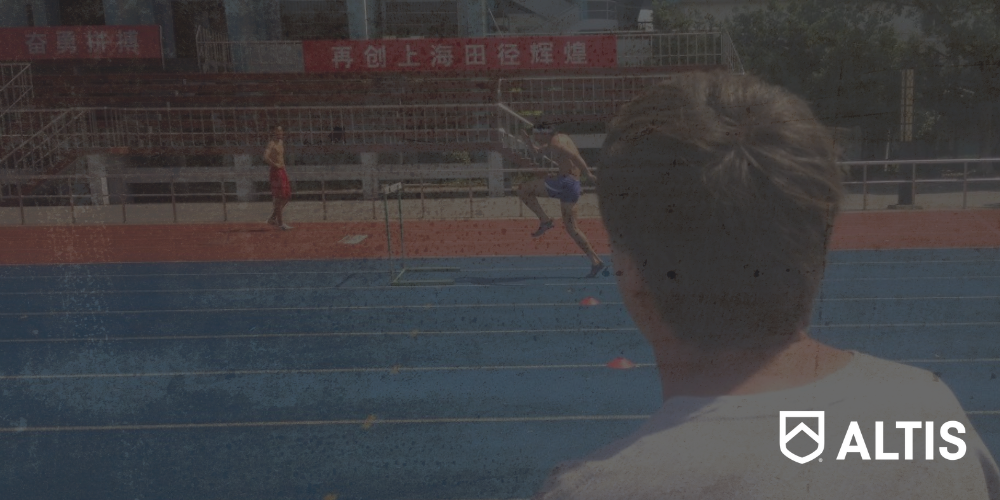Recognizing familiar patterns of movement quickly and accurately is a critical skill for coaches across all sports disciplines, enabling them to enhance their athletes’ performance and reduce injury risks. Coach Pfaff’s Movement Analysis and Screening skills are renowned. This short article introduces how to go about the skill of real time movement analysis in 3 easy steps by developing a refined Coaching Eye.
Q: How can Coaches recognize familiar patterns of movement quickly and accurately?
Study, study, study: There is no shortcut – this is a skill that has to be learned. Watch films of the best performers across male, female, and different age groups. Watch in real time, watch slow motion, then break it down, and make kinograms to help you better define the key landmark positions in the activity you are assessing. (A free guide to the Kingogram Method is here, if you’re not familiar with how to do this).
Then start collating your findings and strategies by asking yourself:
- What are the commonalities between the best performers?
- As such, what would a reasonable and rational technical model look like? (If you don’t know, find a mentor and ask, or lean on your network for guidance)
- Is your model within the bandwidth of the best? (If not, ask yourself ‘why not?’ – excellence leaves clues).
Q: Now I have a model, how can I identify and classify unfamiliar movements?
This step is only possible once you know what a ‘correct’ model looks like – so go back to the step above, if you are trying to learn this without having been through this process.
Once you do have a framework, this is relatively simple: Compare and Contrast.
If you struggle to see the movement in real-time — film it, break it down, watch it in slow motion, watch it in reverse motion. Build Kinograms if you need to. Compare all these things to what ‘correct’ looks like – as defined by your ‘model’.
But – understand there are bandwidths – not everyone moves identically. And this is where nuance and your understanding of kinematics and injury drivers comes in.
Ask yourself – ‘what bandwidths am I comfortable with – for this given movement, at this intensity, given its context within my program / the activity in hand?’
Once you’ve answered this, consider:
- How may outliers move differently? (And why?
- What is ‘normal’ for a given individual?
Q: How can I recognize shapes and patterns of movement from different angles?
Our eyes are incredible organs, but while we live in a 3D world, we can only see in two dimensions. When we observe an athlete accelerating from the side, we can see extension and flexion fairly clearly, but can only infer adduction-abduction, spine and thigh rotation, and foot inversion-eversion, etc.
It can be a surprise when someone shows us photos or videos taken from the front or back and we see a layer of movement that we didn’t see going on from the side. Of particular interest here is non-linear movement. It happens – don’t be surprised. Sprinting is not a totally linear activity! (More to come on this another time).
Consider the image below, showing Olympic Champion, Greg Rutherford. If you watched from the side only, it would be very difficult to see the long axis rotation occurring, as well as the exaggerated lateral movement caused by his Genu Varum (bowed legs).
Note: Greg was a movement outlier due to his unique anatomy – this meant I created a new ‘mailbox’, with his own bandwidths. If he moved out of a bandwidth of ‘normal’ for him – interventions would take place. I wouldn’t necessarily use his movement strategies as a technical model to compare from, for this reason.
This is such an expansive topic, with many considerations and layers to discuss; beyond the scope of this article. However, I hope this has provided you with a roadmap to start confidently tackling your coaching eye challenges.
Now, get creative and make kinograms from different angles for key landmark points within your sport. And, please do share them by tagging @ALTIS on Instagram or Twitter.
Let’s learn out loud on this one.
LEARN MORE
Enroll in Coach Pfaff’s FREE 5-day Course on developing your Coaching Eye. Click Here to get started!


